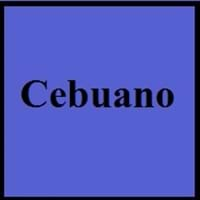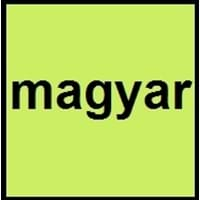Countries
Philippines
European Union, Hungary, Serbia, Vojvodina, Serbia
National Language
Philippines
Austria, Gambia, Hungary, Romania, Serbia, Slovakia, Slovenia, Ukraine
Second Language
Philippines
United States of America
Speaking Continents
Asia
Africa, Europe
Minority Language
Not spoken in any of the countries
Austria, Croatia, Romania, Slovakia, Slovenia, Ukraine
Regulated By
Visayan Academy of Arts and Letters
known, Research Institute for Linguistics of the Hungarian Academy of Sciences (Magyar Tudományos Akadémia Nyelvtudományi Intézete)
Interesting Facts
- About one-fifth of the population of the philippines speak cebuano and are second largest ethnolinguistic group in the country.
- Cebuano contains many words of Spanish origin.
- Hungarian language has only preserved most of its ancient elements.
- 'Magyar' is the Hungarian name for the language, the 'Magyar' is also used as an English word to refer to Hungarian people.
Similar To
Hiligaynon Language
Mansi and Khanty Languages
Derived From
Island of Cebu
East and South Slavic Languages
Alphabets in
Cebuano-Alphabets.jpg#200
Hungarian-alphabets.jpg#200
Writing Direction
Not Available
Left-To-Right, Horizontal
Thank You
Salamat
köszönöm
How Are You?
Kumusta man ka?
Hogy vagy?
Good Night
Maayong Gabii
Jó Éjszakát
Good Evening
Maayong Gabii
jó Estét
Good Afternoon
Maayong Hapon
Jó Napot Kívánok
Good Morning
Maayong Buntag
jó Reggelt
I Love You
Gihigugma ko ikaw
Szeretlek
Excuse Me
Ekskyus mi
elnézést
Dialect 1
Boholano
Csángó
Where They Speak
Bohol
Bacău County, Rumania
Dialect 2
Southern Kana
Oberwart
Where They Speak
southern Leyte
Austria
Dialect 3
North Kana
Székely
Where They Speak
northern part of Leyte
Székely Land
How Many People Speak?
Not Available
Native Name
Visayan
magyar / magyar nyelv
Alternative Names
Binisaya, Bisayan, Sebuano, Sugbuanon, Sugbuhanon, Visayan
Magyar
French Name
cebuano
hongrois
German Name
Cebuano
Ungarisch
Pronunciation
Not Available
[ˈmɒɟɒr]
Ethnicity
Cebuano people
Hungarians
Origin
16th century
1192 AD
Language Family
Austronesian Family
Uralic Family
Subgroup
Not Available
Finno-Ugric
Branch
Not Available
Ugric
Early Forms
No early forms
Old Hungarian
Standard Forms
Standard Cebuano
Modern Hungarian
Signed Forms
Not Available
Not Available
Scope
Individual
Individual
ISO 639 1
No data Available
hu
ISO 639 6
Not Available
Not Available
Glottocode
cebu1242
hung1274
Linguasphere
No data Available
ohu
Language Type
Living
Living
Language Linguistic Typology
Verb-Subject-Object
Subject-Object-Verb
Language Morphological Typology
Not Available
Agglutinative, Synthetic
All Cebuano and Hungarian Dialects
Most languages have dialects where each dialect differ from other dialect with respect to grammar and vocabulary. Here you will get to know all Cebuano and Hungarian dialects. Various dialects of Cebuano and Hungarian language differ in their pronunciations and words. Dialects of Cebuano are spoken in different Cebuano Speaking Countries whereas Hungarian Dialects are spoken in different Hungarian speaking countries. Also the number of people speaking Cebuano vs Hungarian Dialects varies from few thousands to many millions. Some of the Cebuano dialects include: Boholano, Southern Kana. Hungarian dialects include: Csángó , Oberwart. Also learn about dialects in South American Languages and North American Languages.
Cebuano and Hungarian Speaking population
Cebuano and Hungarian speaking population is one of the factors based on which Cebuano and Hungarian languages can be compared. The total count of Cebuano and Hungarian Speaking population in percentage is also given. The percentage of people speaking Cebuano language is 0.32 % whereas the percentage of people speaking Hungarian language is 0.19 %. When we compare the speaking population of any two languages we get to know which of two languages is more popular. Find more details about how many people speak Cebuano and Hungarian on Cebuano vs Hungarian where you will get native speakers, speaking population in percentage and native names.
Cebuano and Hungarian Language Codes
Cebuano and Hungarian language codes are used in those applications where using language names are tedious. Cebuano and Hungarian Language Codes include all the international language codes, glottocodes and linguasphere.





